There are currently 33 satellites orbiting Saturn.
Data on all of the satellites can be found on NASA's
Saturnian Satellite Fact Sheet website.The
moon that is getting most of the attention is
Titan,
the only moon in the Solar System to have a
substantial atmosphere:

The image above shows the atmosphere of
Titan, and
all 12 layers is seen here. Prior to the Huygens
probe visit to
Titan, Cassini imaged the surface of
Titan using a combination of filters and image
enhancements:
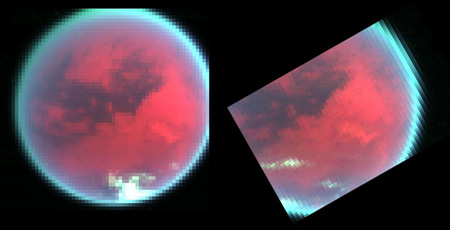
But the excitement of the Huygens probe has been
discussed in the
Astrobiology section of the website. While
there are a large number of satellites to talk
about, we will only discuss the more "important" and
more interesting. Just like the major moons of
Jupiter, the majority of Saturn's moons are of a
rocky-ice composite. One cannot talk about the
satellites of Saturn without showing the "Death
Star."

| The moon Mimas does in fact resemble the
famous George Lucas icon. It is also very
small - only 392 km in diameter. I am not
sure if George Lucas used this moon as
inspiration, but the resemblance is uncanny.
This image of the Death Star is from the
official
Star Wars website. The crater of Mimas
is almost the same proportion as the Death
Star's main weapons aperture. |
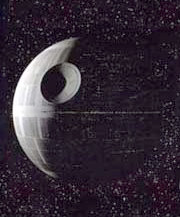 |
Another fascinating moon is Enceledus. By the
looks of it, it appears to have been ripped apart
then put back together:

it is also very small at only 501 km in diameter.
The larger moon, Tethys, at 1,060 km in diameter is
a very heavily cratered moon - probably one of the
most cratered in the Solar System:

The crack that appears on the middle left of the
moon is actually a 2,000 km long crack along the
surface. The next three moons are also very
unusual as they have completely different looking
hemispheres: At 1,120km in diameter, Dione leads
the three in variation. The one side shows the
"normal" cratered space body:
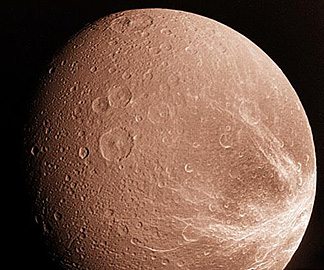
While the other side shows something completely
different:

Not as dramatic as Dione is Rhea. Rhea is larger at
1,530 km and features a smooth side:
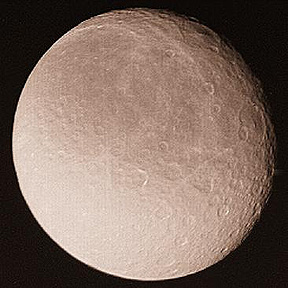
And a heavily cratered side:

Iapetus has the same pattern as Rhea, but the latest
Cassini images shows a curious white powder:

The material is thought to be impact debris from
some other object within the Saturnian system.
The remaining moons of Saturn resemble
asteroid-like
bodies. A good example is the moon Phoebe - only 200
km long. This high
resolution image by Cassini shows Phoebe up close
for the first time:
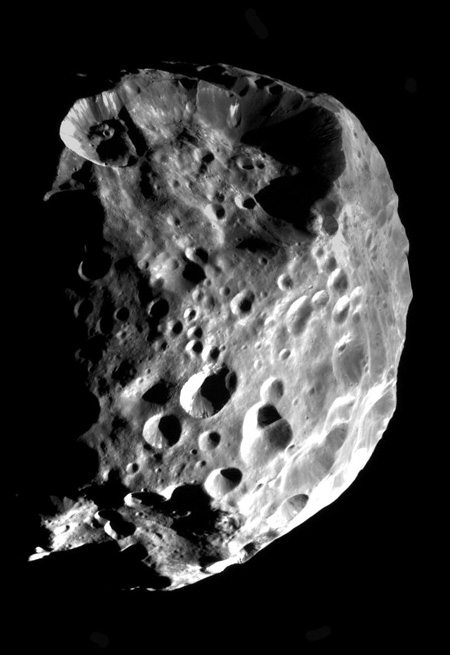
I will end this section with two favorite images,
this time from Cassini. The first shows Dione with a
Saturn backdrop and the second shows a very high
resolution image of Dione:
Be sure to keep watch of the
Cassini-Huygens webpage for updates photographs
and data.
Back to Top |

